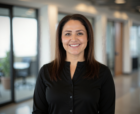
As a First Nations woman living in southern Ontario, I recognize the privilege I have had in accessing dental care. Growing up, my family had regular visits to the dentist, and I rarely thought about whether I felt safe or welcome in those spaces. But as I grew older, and as I connected more deeply with Indigenous communities across Ontario, I came to understand that my experience was not the norm. For many First Nations, Inuit, and Métis Peoples, particularly those in northern, remote, or urban marginalized areas, access to dental services is limited, inconsistent, and too often culturally unsafe.
Culturally safe care is a health approach that addresses power imbalances, systemic barriers, and historical injustices to create environments where patients feel respected and safe to express their identity. It goes beyond kindness or competence. It ensures Indigenous patients feel empowered in healthcare settings. It requires oral health professionals to confront the legacy of colonialism and how it continues to shape Indigenous experiences, including in the dental chair. From Residential Schools to the Sixties Scoop and discriminatory policies, many Indigenous Peoples carry valid mistrust and trauma when navigating care. These realities must shape how services are delivered.
In Ontario, proximity to care does not mean equal access. Many Indigenous families face financial barriers due to gaps in federal coverage, like the Non-Insured Health Benefits (NIHB) program, or struggle to find clinics willing to bill through it. Nearly one-third of Indigenous adults in Ontario report visiting a dental professional only in emergencies. This starkly reflects systemic obstacles that delay preventive care (Health Council of Canada, 2012). I’ve seen friends and family turned away or shamed for trying to use NIHB, often left to pay out of pocket or forgo care altogether. The burden should not fall on patients to explain these systems or advocate for access.
Culturally safe dental care must include spaces where Indigenous identities are affirmed through staff representation, family-friendly clinics, or the inclusion of Indigenous artwork and languages. However, these gestures must be supported by institutional change, including the embedding of Indigenous health into dental curricula, partnering with local communities, and integrating traditional knowledge where appropriate and welcomed.
Dental professionals must also reflect on their assumptions. If the question “How did you let your condition get this bad?” has ever crossed your mind, pause. Consider what a patient may have endured to sit in your chair: poverty, relocation, abuse, racism, long waits for benefit approvals, or fear of judgment. When we approach care with humility instead of blame, we open the door to trust and healing.
The Truth and Reconciliation Commission’s Calls to Action offer a framework for transformation. Call to Action 22 urges healthcare professionals to recognize and use Indigenous healing practices when requested. In dentistry, this could mean understanding traditional medicines, involving Elders in health promotion, or adjusting care to honour cultural values.
As someone who has benefitted from reliable, respectful care, I feel a responsibility to advocate for a system where all Indigenous Peoples, regardless of geography or income, can access dental services that are culturally safe. When we ground care in cultural safety, we do more than improve oral health; we restore dignity, build trust, and advance reconciliation, one appointment at a time.
About the author

Heather Watts (she/her) is a Mohawk from Six Nations of the Grand River and a Principal at First Peoples Group. She holds degrees from Syracuse University, Columbia University, Harvard University, and is a doctoral candidate at the University of Toronto. Her work focuses on education, reconciliation, and strengthening relationships with Indigenous Nations. Interested in connecting with Heather? Please reach out at heather@firstpeoplesgroup.com.











